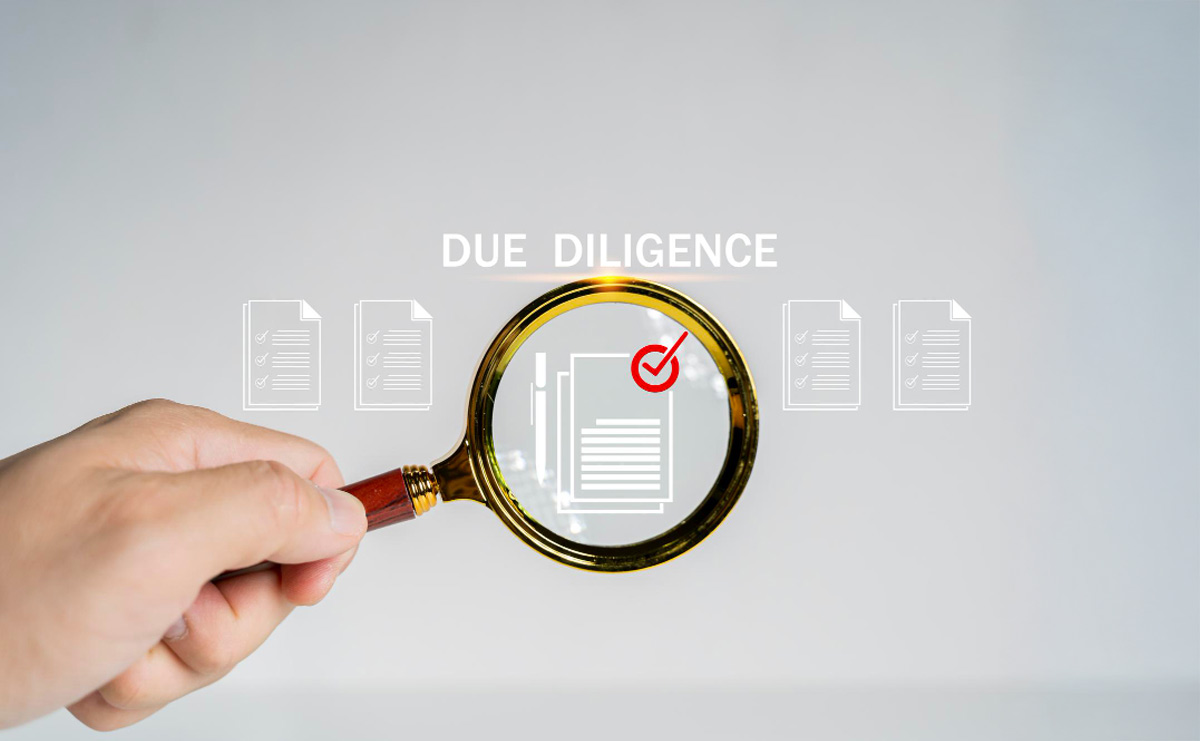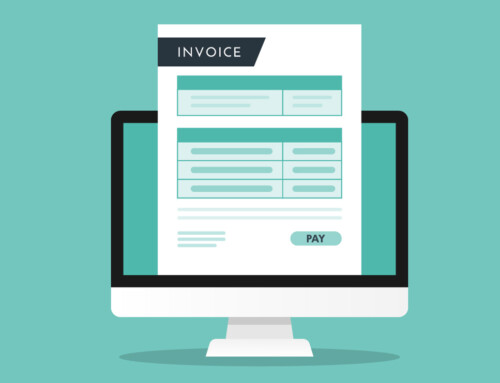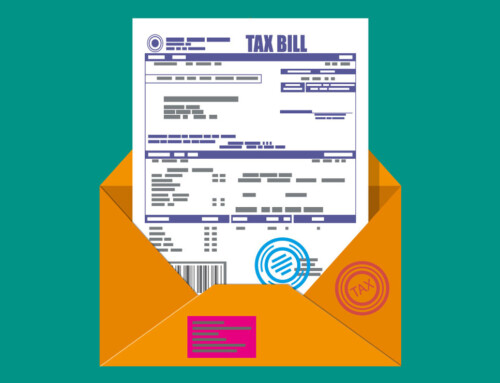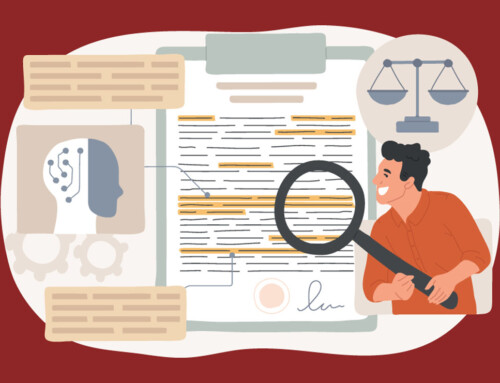Contents
Essential Due Diligence Checklist Template for Law Firms: A Complete Guide
Due diligence is the careful analysis and prudence a lawyer or firm employs prior to signing transactions or making acquisitions. Practically, it’s examining closely for facts – financial information to legal agreements – to minimize liability and surprises. A due diligence checklist template is a very handy instrument to facilitate this more efficiently, with the list of things to examine set out in a logical sequence so attorneys are not leaving anything behind; employing such checklists, small and medium-sized firms can improve day-to-day efficiency, stay completely compliant, and safeguard their bottom line.
Understanding Due Diligence
Due Diligence Meaning and Importance
In legal contexts, due diligence means conducting a thorough inquiry to meet legal obligations and avoid hidden risks. It is the level of care a reasonable lawyer should exercise before deciding. Lawyers perform due diligence by reviewing all relevant information – from contracts and financial statements to regulatory records – before finalizing a deal or advising a client. Skipping this step can lead to serious consequences. According to one survey, over 60% of executives blamed poor due diligence for deal failures in mergers and acquisitions. Beyond transactions, insufficient due diligence also exposes law firms to regulatory and liability issues. For example, the UK’s Solicitors Regulation Authority fined a major firm £232,500 for failing to perform adequate due diligence on high-risk transactions. And in a 2024 review, only 22% of law firms were fully compliant with anti-money-laundering due diligence requirements – meaning the majority had gaps that could lead to penalties. Thorough due diligence is not optional; it’s a fundamental duty that protects your client’s interests and your firm’s reputation.
| Context | Consequence of Poor Due Diligence |
| M&A Transactions | Deals can fall apart or destroy value – over 60% of executives say poor due diligence is a main cause of failed acquisitions. |
| Regulatory Compliance (AML) | Firms face fines and sanctions – e.g., a top law firm was fined £232k for lax due diligence in a high-risk matter. |
Table 1: Consequences of Inadequate Due Diligence
Why Thorough Diligence Matters for Law Firms
Understanding the due diligence meaning is critical for managing risk and protecting client interests. It’s far less costly to catch a problem early than to litigate or remediate it after a deal closes. Proper due diligence allows attorneys to uncover “red flags” (hidden liabilities, fraud indicators, regulatory issues) in time to advise clients or negotiate protections. Conversely, cutting corners on due diligence invites trouble. A lawyer who fails to investigate key facts could face malpractice claims or a deal gone bad. Moreover, in many situations (like handling client funds or corporate acquisitions), attorneys have ethical or legal duties to investigate and document certain information. By exercising rigorous due diligence, a firm stays on the right side of these obligations. It is both preventing costly surprises and liabilities and giving you the insights to structure better deals and strategies.
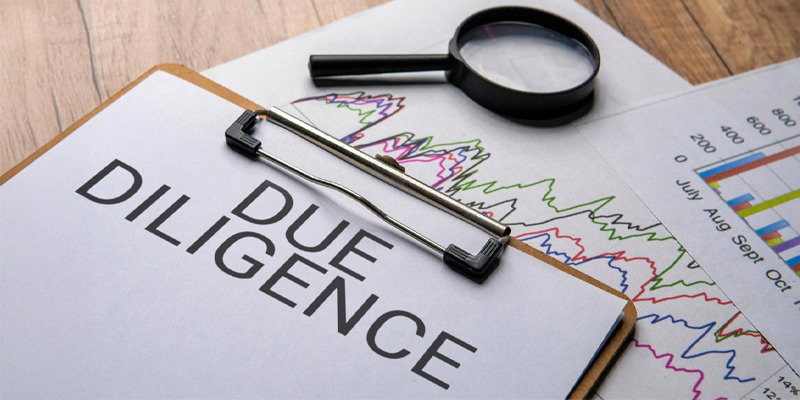
What is a Due Diligence Checklist Template?
Definition and Purpose
A due diligence checklist template is a pre-formatted list of key items to review during a legal matter—such as verifying financial records, contracts, and licenses. It provides a repeatable roadmap that lawyers can adjust based on the type of transaction or client. By using a standardized checklist, firms reduce the risk of missing critical steps and ensure a consistent process across the team. In one midsize law firm, introducing a due diligence template helped reduce review time by 30% and significantly improved internal error tracking. This not only boosts efficiency but also reassures clients that the work is thorough and reliable.
How Checklists Improve Efficiency and Compliance
Using a due diligence checklist offers several concrete benefits for a law firm’s efficiency, quality, and compliance. First, it streamlines complex tasks. With a checklist, attorneys have a clear sequence of what to do, so they don’t waste time figuring out the next step or duplicating work. This can eliminate redundant document requests and other delays, accelerating the overall process. Second, a checklist ensures comprehensive coverage. It functions as a safety net, ensuring that critical areas (such as contracts, regulatory obligations, or financial statements) are never overlooked. This thoroughness directly supports compliance – for instance, following an AML due diligence checklist means you systematically complete all required KYC checks, greatly reducing the chance of missing a legal requirement. Third, checklists promote accountability and teamwork. They make the progress of the due diligence transparent: each item can be ticked off and assigned to a team member. Senior lawyers can quickly verify that nothing is skipped, and junior lawyers have a clear guide to follow. In one public defender’s office, introducing checklists was found to reduce errors, improve team communication, and serve as a training tool for new attorneys. As Chief Defender Jeff Adachi observed, a checklist sets out the minimum expected steps and lets the team confirm everything has been done. Finally, checklist templates drive consistency and quality control. Over time, your firm can refine its templates to include lessons from past matters and changes in law. In short, using a checklist template leads to fewer careless mistakes, more efficient use of time, and better compliance with legal and ethical standards.
| Benefit | Impact on Legal Practice |
| Error Reduction | Minimize oversight by listing every necessary step. Checklists significantly lower the chance of missing a critical detail. |
| Efficiency Gains | Streamline information gathering. A structured checklist prevents redundant work and delays, making the process faster and more organized. |
| Thorough Coverage | Ensures all key areas are reviewed. By following a template, lawyers cover financial, legal, operational, and compliance topics so nothing important slips through. |
| Team Coordination | Improves collaboration. The checklist assigns tasks and tracks progress, keeping everyone on the same page and accountable. |
| Training & Consistency | Serves as a training tool for junior staff and enforces a standard approach for the firm. New lawyers ramp up faster by using established checklists, and clients get a consistent, high-quality due diligence process every time. |
Table 2: Key Benefits of Using a Due Diligence Checklist
Key Components of a Due Diligence Checklist
Typical due diligence checklists are divided into sections based on the subject matter. For example, most will have sections for Company Information & Corporate Structure (organizational documents, ownership details, corporate records), Financial Records (financial statements, debt schedules, tax returns), Legal Matters (material contracts, pending litigation, licenses and permits, regulatory compliance), Assets & Intellectual Property (property titles, patents and trademarks, key assets), and Human Resources & Operations (employee contracts, benefits plans, labor issues, operational policies). By organizing the checklist by category (and adjusting it for the specifics of the matter), attorneys can methodically tackle each aspect of the review. Checklists should also be tailored based on jurisdictional requirements (e.g., local licensing rules, tax obligations) and the scale of the deal—smaller transactions may require a streamlined version, while complex cross-border matters demand additional sections.
| Due Diligence Category | Examples of Checklist Items |
| Corporate Organization | Articles of Incorporation or Organization, bylaws, minute books of board meetings, lists of shareholders or partners, organizational charts, and any pending changes to corporate structure. |
| Financial & Tax | Audited financial statements for the past 3–5 years, interim financial reports, budgets vs. actual results, outstanding loans and credit facilities, tax returns and tax audit correspondence, schedule of contingent liabilities. |
| Legal & Regulatory | Material business contracts (client/customer agreements, vendor contracts, loan agreements, leases), documentation of any ongoing lawsuits or disputes, past litigation settlements, licenses and permits (with expiration dates), compliance policies (e.g. anti-bribery, data privacy), and records of any regulatory violations or fines. |
| Assets & Intellectual Property | Asset lists (real estate, equipment, inventory), title documents or deeds for real property, intellectual property portfolio (patents, trademarks, copyrights) with registration details, IP licensing agreements, any IP infringement claims or disputes, and technology or software licenses used by the company. |
| Human Resources & Operations | Employee roster and key employment agreements (for executives or key personnel), summary of compensation and benefits plans, any union or collective bargaining agreements, records of labor disputes or HR compliance issues, workplace policies/handbooks, and descriptions of critical operational processes or IT systems (including data security measures). |
Table 3: Typical Sections in a Due Diligence Checklist
(Note: The specific items will vary by industry and transaction. Checklists should be tailored to fit each situation, expanding or omitting items based on what’s relevant.)
Applying Due Diligence Checklists in Practice
Checklists apply to a wide range of legal scenarios. Here are a few common use cases for due diligence checklists and how they add value in each context:
Mergers and Acquisitions (M&A)
In an M&A transaction, a due diligence checklist is essential. The acquiring party’s lawyers must review all aspects of the target business—corporate records, financials, contracts, employment, IP, and regulatory compliance. A structured checklist streamlines this process, letting teams divide tasks among specialists (e.g., finance attorneys, IP counsel) and track progress efficiently. It also increases the chances of identifying red flags—such as pending lawsuits, hidden liabilities, or contract assignment requirements—before the deal closes. Critical issues can be prioritized early, while less urgent items are reviewed in sequence. A solid checklist not only supports a smoother, more successful transaction but also gives buyers leverage to negotiate protections. Sellers can also benefit by preparing materials based on the same checklist to avoid delays or surprises.
Third-Party Due Diligence
Law firms must conduct due diligence not only for transactions but also when onboarding new clients, vendors, and business partners. These checks are essential to avoid ethical pitfalls, legal noncompliance, and reputational risk.
-
Client Due Diligence
At intake or when handling a major new matter, firms are required—by both ethical standards and anti-money laundering (AML) laws—to verify a client’s identity and legitimacy. A structured due diligence checklist ensures all critical steps are followed, such as:
- Collecting official identification (IDs or corporate formation documents)
- Running conflict-of-interest checks
- Screening for sanctions or politically exposed persons (PEPs)
- Assessing the client’s source of funds
- Obtaining a signed engagement letter or fee agreement
Skipping any of these steps can expose a firm to regulatory penalties or risky client relationships. For example, Clyde & Co was fined £50,000 by the UK Solicitors Regulation Authority in 2017 for failing to conduct proper AML checks on a high-risk client.
-
Vendor and Partner Due Diligence
The same level of scrutiny should apply when engaging vendors, service providers, or referral partners. A vendor due diligence checklist typically includes:
- Verifying business registration, references, and litigation history
- Assessing financial stability and service delivery capability
- Confirming compliance with relevant regulations (e.g., data security protocols)
This process helps your firm avoid high-risk or noncompliant third parties. It also creates a documented trail of your vetting process, which can prove vital during audits or client reviews.
If your firm advises corporate clients, you may also be responsible for vetting their prospective partners or acquisition targets. In such cases, a ready-to-use checklist helps standardize the process and ensures nothing is overlooked.
-
Tailoring the Checklist
Checklist contents should reflect the context. For example:
- Client intake: Focus on identity verification and AML compliance
- Vendor reviews: Emphasize licenses, financial health, and security measures
- Law firm mergers or partner referrals: Include conflict checks, file audits, and cultural compatibility
In all cases, due diligence checklists offer structure, transparency, and protection—whether you’re evaluating a client, a vendor, or a strategic ally.
Creating and Implementing a Due Diligence Checklist Template
To make due diligence checklists truly effective, law firms must develop tailored templates and embed them into their workflow. Here’s a step-by-step guide:
- Identify the Scope and Goals: Determine what the checklist will cover (e.g., an M&A deal, client onboarding, regulatory compliance review) so you include relevant categories and tasks for that purpose.
- List Key Categories: Outline the major areas to review (such as corporate records, financial information, legal liabilities, etc.) as the main sections of the checklist.
- Add Specific Items: Under each category, list concrete documents or questions to check. Be as specific as possible (e.g,. “Obtain last 3 years of audited financial statements” instead of just “Financials”). Use input from colleagues or past deals to ensure no important item is missed.
- Organize Logically: Arrange the checklist in a sensible order (chronologically or by priority). Number the sections and items for clarity. For example, you might group all corporate documents together, then financials, then contracts, etc.
- Test and Refine: Pilot the checklist on a small project or a hypothetical scenario. Refine the template if you discover missing steps or unnecessary ones. Encourage team members to give feedback.
- Maintain the Template: Update your checklist templates periodically to account for changes in law or lessons learned from recent matters. A good template is a living document that evolves with best practices.
By following these steps, you’ll create a checklist template that is customized to your practice and helpful in day-to-day work (rather than a generic list that might not fully apply).
Best Practices for Checklist Implementation
- Use technology: Manage your checklists with legal practice management or project management software. These tools let you assign tasks, set deadlines, and track progress in one place, with automatic reminders and updates.
- Assign an owner: Designate one team member to be responsible for the checklist on each matter. This person ensures that every item is addressed and nothing is skipped or forgotten.
- Standardize the process: Make completing the due diligence checklist a required step before closing any deal or accepting a new client. Building it into your firm’s standard procedures promotes consistency and quality.
- Stay flexible: Mark items that don’t apply as “N/A” and add special items when a particular case has unique risks. The checklist should be comprehensive but adaptable to each situation.
- Continuous improvement: After each project, do a brief post-mortem on the due diligence process. If something was missing or an item was unnecessary, update the template. Over time, your checklist will become even more effective as it incorporates feedback and changes.
- Explore existing resources: Save time by starting with checklist templates from trusted sources like the American Bar Association or legal tech vendors. Tools such as RunSensible offer customizable due diligence templates and automation features that help streamline your review process.
Final Thoughts
In legal practice, understanding the due diligence meaning goes far beyond theory—it’s the difference between a successful outcome and a costly failure. Deals backed by a comprehensive checklist are far less likely to collapse due to hidden risks. A client whose background has been carefully checked is far less likely to bring trouble to your doorstep. A due diligence checklist template is not just paperwork – it’s an essential insurance policy for your firm’s decisions and advice. For small and mid-sized law firms, embracing a culture of checklist-driven due diligence can be a turning point. It levels the playing field with larger firms by enabling a lean team to be just as meticulous and organized. It also directly benefits the bottom line. Efficient due diligence means fewer mistakes, faster deal turnarounds, and stronger compliance.
In an era where clients demand both speed and accuracy. With a robust checklist template in hand, your firm can confidently cover all those details – knowing that diligence today will pay dividends tomorrow.
Upgrade Your Due Diligence with RunSensible
RunSensible is an all-in-one legal practice management solution that can take your firm’s due diligence process to the next level. It offers features like task checklists, document management, client intake automation, and calendaring – all integrated on one platform. You can assign due diligence tasks to your team with built-in checklists and deadlines, and track progress in real time. RunSensible’s centralized dashboard and workflow automation ensure that no detail slips through the cracks, whether you’re managing an M&A due diligence project or routine client onboarding. It’s designed to boost your firm’s efficiency and compliance by reducing manual work and human error. You can try RunSensible for free and experience these benefits firsthand.
FAQs
What does “due diligence” mean in law?
It refers to investigating all relevant details to make informed legal decisions and avoid liability. Examples include reviewing financials and legal agreements before a deal.
Can small firms use these effectively?
Yes. Templates and affordable tools help smaller teams work smart by automating tasks and focusing on high-risk areas.
How do checklists support compliance?
They formalize and document required steps, making regulatory audits easier and reducing oversight risk
References
- https://www.law.cornell.edu/wex/due_diligence
- https://mnacommunity.com/insights/why-mergers-and-acquisitions-often-fail/
- https://www.sanctionscanner.com/blog/top-uk-law-firm-sentenced-record-sum-for-breaking-money-laundering-rules-576
- https://verify365.app/eight-law-firms-fined-57000-by-sra-for-aml-failures/
- https://law.temple.edu/aer/2016/07/07/lawyers-need-checklists-reduce-error/
- https://datarooms.org/vdr-blog/due-diligence-checklist/
- https://dealroom.net/blog/legal-due-diligence
- https://legal.thomsonreuters.com/en/insights/articles/what-due-diligence-checklist-template
Disclaimer: The content provided on this blog is for informational purposes only and does not constitute legal, financial, or professional advice.
